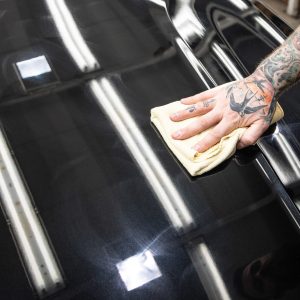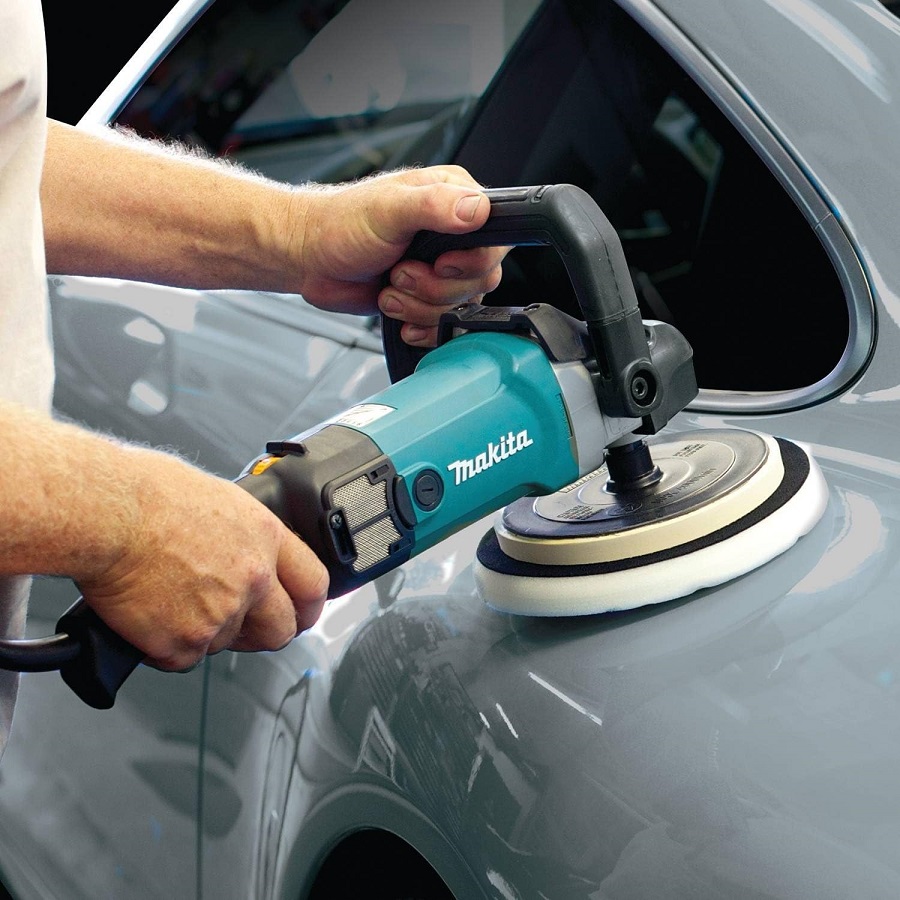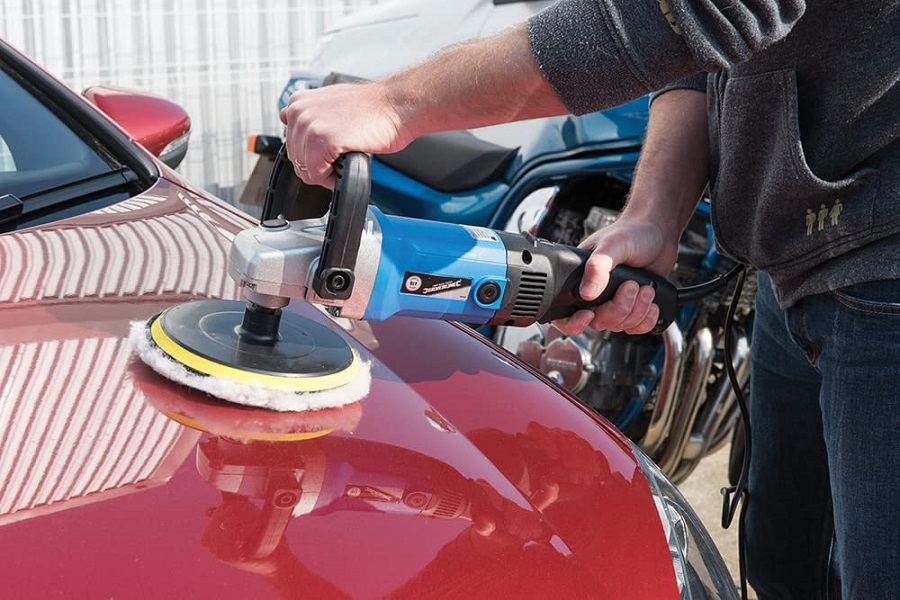Not sure what you should polish a car with? Don’t worry, here’s a run-down of all the major equipment you need to get the job done.
Before we consider what tools you’ll need to polish your car with, it’s worth going over why polishing a car is worthwhile. Put simply, polishes are a great way to remove small paint defects such as very minor scratches or water marks. The polish is able to do this because it has a gentle abrasive quality to it, meaning it can remove lightly damaged areas of clearcoat. But as a result, it’s important that you apply it correctly. Here’s how to do that:

Microfiber Cloth or Application Pad
If you’re polishing your car by hand, a microfiber cloth is the most common choice of applicator. Though, some polishes come with their own specific applicator pads, or you might wish to buy an applicator pad yourself, specifically for this purpose. Either way, the technique you use is the same.
First, wash the car to make sure it’s clean, then dry it so that there’s no remaining surface moisture. When the bodywork is dry to the touch, you can add some polish to your cloth or pad and then start applying the polish to the panel in circular motions. It’s also a good idea to follow the contours of the car’s bodywork. Work it into the panels, one at a time, until the polish is near-transparent. Then, check the bottle to see how long it needs to settle (if at all).
Once you’re happy that the panel is sufficiently covered in polish and ready to be buffed, you’ll need to take a fresh clean microfiber towel and use that to wipe away the residue. You may need to turn the cloth over frequently to achieve the best results.
If you need a new set, have a read of our guide to the best microfiber cloths on the market. Alternatively, consider something like the Meguiar’s product pictured above. Buy them from $9.99 / £11.39 on Amazon, or check out price comparisons below:

How to use a machine buffer
If you want to speed up the process, a machine buffer is the tool you need. The technique for polishing a car remains the same, except this time instead of applying the polish by hand, you use a power tool. Take your polish and apply it to the machine buffer’s application pad. It’ll likely be either a foam or microfiber material; something gentle. The machine buffer will then rotate the application pad for you, so there’s no need for all that wrist action. As a result, you’ll often find that this ‘point and squirt’ method makes polishing a car significantly quicker (and less tiring).
You do need to take a bit of extra care though, compared to polishing by hand. So, for more detail on this process, watch the tutorial below:
If a tool like this sounds ideal, consider buying something like the Makita product pictured above. Buy it from Amazon for $252.98 / £231.54, or check out regional price comparisons below:
Hand vs Machine car buffing – which is best?
Cost
The first factor to consider is cost. There’s no hiding the fact that the initial outlay that you need to spend on a machine buffer is significantly more than that of microfiber cloths. In fact, it’ll probably be way more than 10x as costly. So, if you’ve only got a shoestring budget to play with, you’re going to have to do it by hand with a set of microfiber cloths.
Effort level
However, if you can afford the initial expense of a machine buffer, it’ll take a lot of the physical stress out of the job. Instead of having to rotate your wrist often and spread your arms across the panel, you can simply guide the machine buffer over the bodywork in a relaxed manner. Not only will it become an easier job to do, but it’ll probably become a quicker job too. As for the quality of results, it is possible to get a machine-like finish from polishing a car by hand, but it’s going to take a lot more effort.
Experience required
The final thing to consider is safety. Not so much for you, but for your car. If you’re a novice car detailer, it might be better to start off working with microfiber cloths. Then, once you get the feel for how to polish a car correctly, it might be wise to consider upgrading to a machine polisher. There are a few different variations of machine polisher, and while the gentlest options are likely to be safe for rookie DIY-ers, there’s definitely potential for trouble to strike with the more potent machines.
Verdict
So, in short, if you’re a casual car owner who wants to polish their vehicle on a tight budget, a set of microfiber cloths and a bit of elbow grease is probably the way forward. However, if you’re a keen detailer, or someone who wants to be, then it’s definitely worth making the investment in a machine buffer.





